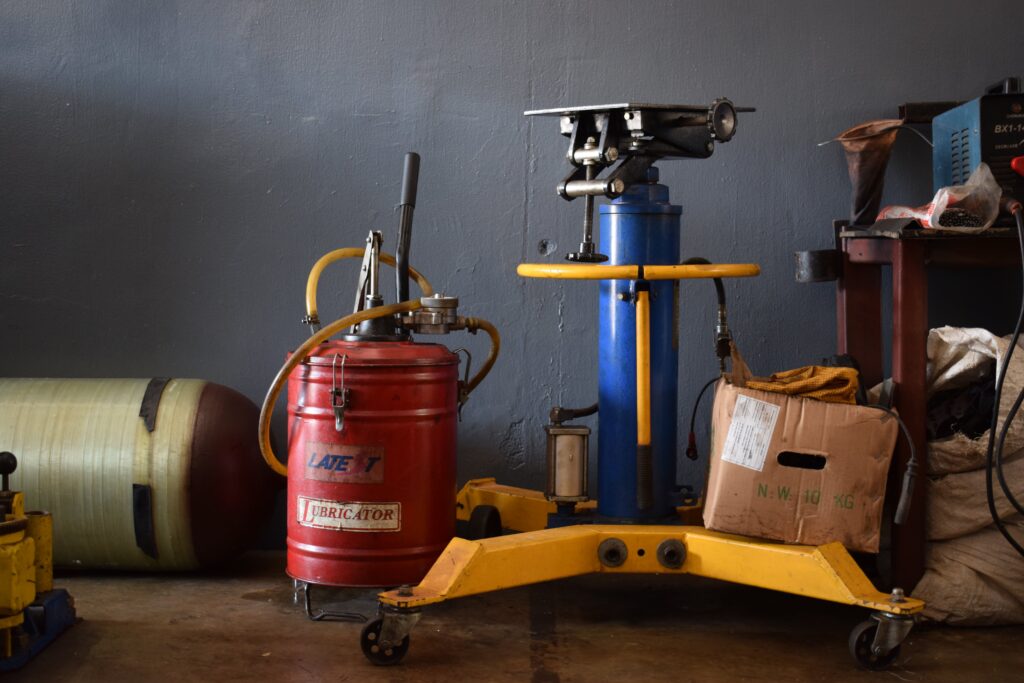Have you ever wondered what materials are commonly used in creating stunning mechanical artwork? This article will unveil the secrets behind the most popular materials that artists use to bring their mechanical masterpieces to life. From steel and brass to wood and acrylic, these materials not only add a touch of beauty but also enhance the intricacy of these captivating creations. Whether you are a lover of mechanical art or simply curious about the materials behind it, this article will surely expand your knowledge and appreciation for this unique form of artistic expression. So, let’s embark on a journey to explore the fascinating world of materials used in mechanical artwork.
Wood
Wood is a popular choice for mechanical artwork due to its natural and warm look. The grain patterns and rich colors of different wood types can add depth and character to any piece. Wood is also incredibly versatile as it can be easily carved and shaped according to the artist’s vision. From intricate details to smooth curves, wood can bring any design to life.
In addition to its aesthetic appeal, wood is also known for its durability and long-lasting nature. With proper care, wooden mechanical artworks can withstand the test of time and become treasured heirlooms. The natural properties of wood, such as its ability to expand and contract with changes in humidity, make it a resilient material for artistic creations.
Metal
If you prefer an industrial and modern aesthetic for your mechanical artwork, metal is the perfect choice. The sleek and often polished finish of metals like stainless steel, aluminum, or brass adds a contemporary touch to any piece. Metal boasts superior strength and sturdiness, making it ideal for intricate mechanical movements that require stability.
One of the advantages of working with metal is its malleability. Metal can be easily molded and welded into various shapes, allowing artists to bring their imaginative designs to life. Whether it’s curved, twisted, or intricately detailed, metal can capture even the most complex mechanical concepts in its solid form.

Glass
Glass offers a unique and transparent element to mechanical artwork. Its ability to allow light to pass through adds a mesmerizing and captivating effect to any piece. Glass can be used to create delicate and intricate mechanical components, showcasing the skill and precision of the artist.
Furthermore, glass can be further enhanced through techniques such as frosting or etching. These processes create a stunning visual effect by adding texture or designs to the glass surface. The frosted or etched areas diffuse the light, casting beautiful shadows and creating a truly unique look in the artwork.
It’s important to note, however, that glass is a fragile material. Care must be taken when handling and displaying glass mechanical artwork to avoid breakage.
Plastic
For those who are looking for a lightweight and affordable option, plastic is an excellent choice for mechanical artwork. Plastic offers a wide range of colors and finishes, allowing artists to experiment with different tones and textures.
One of the greatest advantages of plastic is its ability to be easily molded into various shapes and sizes. This allows for the creation of intricate mechanical details without compromising on durability. Plastic can withstand impact to a certain extent, making it suitable for mechanical artworks that are meant to be more durable than delicate.
Additionally, plastic artwork is relatively easy to maintain, as it can be cleaned with simple solutions. However, plastic may not be as long-lasting as other materials and may be prone to wear and tear over time.

Ceramics
Ceramics add an elegant and decorative touch to mechanical artwork. The smooth and glossy finish of glazed ceramics can elevate the overall aesthetic of any piece. With a variety of colors and finishes to choose from, artists can create mechanical artworks that exude a sense of sophistication and refinement.
Glazing is the process of adding a glass-like coating to ceramics, enhancing both durability and visual appeal. The glaze can also create unique patterns and designs on the surface of the ceramics, making each piece one-of-a-kind.
However, it’s important to note that ceramics are not as durable as other materials. They are more prone to cracking or chipping, especially when subjected to significant impact or rough handling. Therefore, careful handling and display are necessary to preserve the beauty and longevity of ceramic mechanical artworks.
Stone
Stone is a timeless material that lends a natural and organic feel to mechanical artwork. It embodies strength and resilience, making it an ideal choice for larger and more robust pieces. Stone can be carved or polished to achieve intricate details or smooth surfaces, depending on the artist’s vision.
One of the notable advantages of stone is its resistance to weathering. Unlike some other materials, stone can withstand the test of time, making it suitable for both indoor and outdoor mechanical artworks. The natural beauty of stone, with its varied colors and textures, adds depth and character to any design.
However, it’s important to consider the weight of stone when choosing it as a material for mechanical artwork. Stone can be heavy, requiring additional support or careful installation to ensure stability and prevent accidents.

Paper
Paper offers versatility and ease of work when it comes to mechanical artwork. It can be folded, cut, or painted to create intricate designs and shapes. The lightweight nature of paper makes it ideal for smaller and delicate mechanical components.
Artists can use a variety of techniques, such as origami or paper cutting, to bring their mechanical artworks to life. The pliability of paper allows for precise and intricate detailing, showcasing the artist’s skill and creativity.
However, it’s important to note that paper is not suitable for outdoor use. It is susceptible to moisture, heat, and other environmental factors that can cause damage or deterioration. Therefore, paper mechanical artworks are best displayed in controlled indoor environments.
Fabric
Fabric adds a soft and tactile element to mechanical artwork. It can be sewn or embroidered to create textures, patterns, and decorative elements. The wide range of fabrics available, from delicate silks to sturdy canvas, offers endless possibilities for artistic expression.
However, it’s important to consider the limited durability of fabric in mechanical artworks. Fabric can be prone to fraying, tearing, or fading over time. Therefore, it is crucial to handle fabric mechanical artworks with care and avoid exposing them to excessive wear and tear.
Despite its limitations, fabric can add a touch of warmth and comfort to mechanical artwork, especially in pieces that aim to evoke emotions or convey a sense of softness.
Plaster
Plaster is a versatile material that is often used in the creation of molds and casts for mechanical artwork. Its smooth surface provides an excellent canvas for painting and detailing. Artists can achieve intricate designs and textures with ease on plaster surfaces, making it a popular choice for those seeking a smooth and refined finish.
Plaster is relatively easy to work with, allowing artists to experiment with different techniques and effects. It can be sanded, carved, or even textured to bring depth and dimension to the artwork. Its relatively low cost and availability also make it an attractive option for artists on a budget.
However, it’s important to note that plaster is not as strong as other materials. It may not withstand significant impact or stress, making it unsuitable for mechanical components that require durability or robustness.
Rubber
Rubber is a versatile material that offers flexibility and heat resistance, making it suitable for certain types of mechanical artwork. Its ability to be molded into different shapes and sizes allows artists to create unique and intricate designs.
Rubber’s flexibility also makes it a suitable material for mechanical components that require movement or elasticity. It can be used to create joints or connectors that allow for smooth and continuous motion in the artwork.
However, it’s worth noting that rubber is not as commonly used in mechanical artwork compared to other materials. Its properties make it more suitable for specific applications rather than as a primary material for overall construction.

